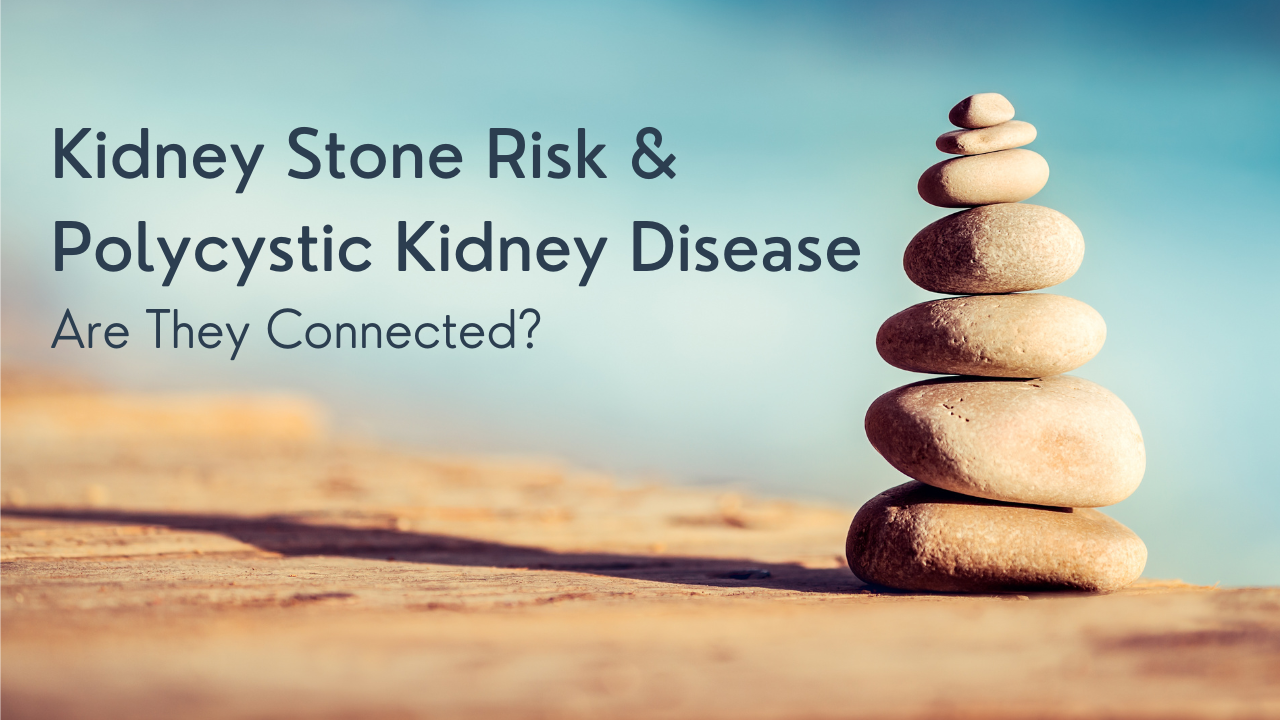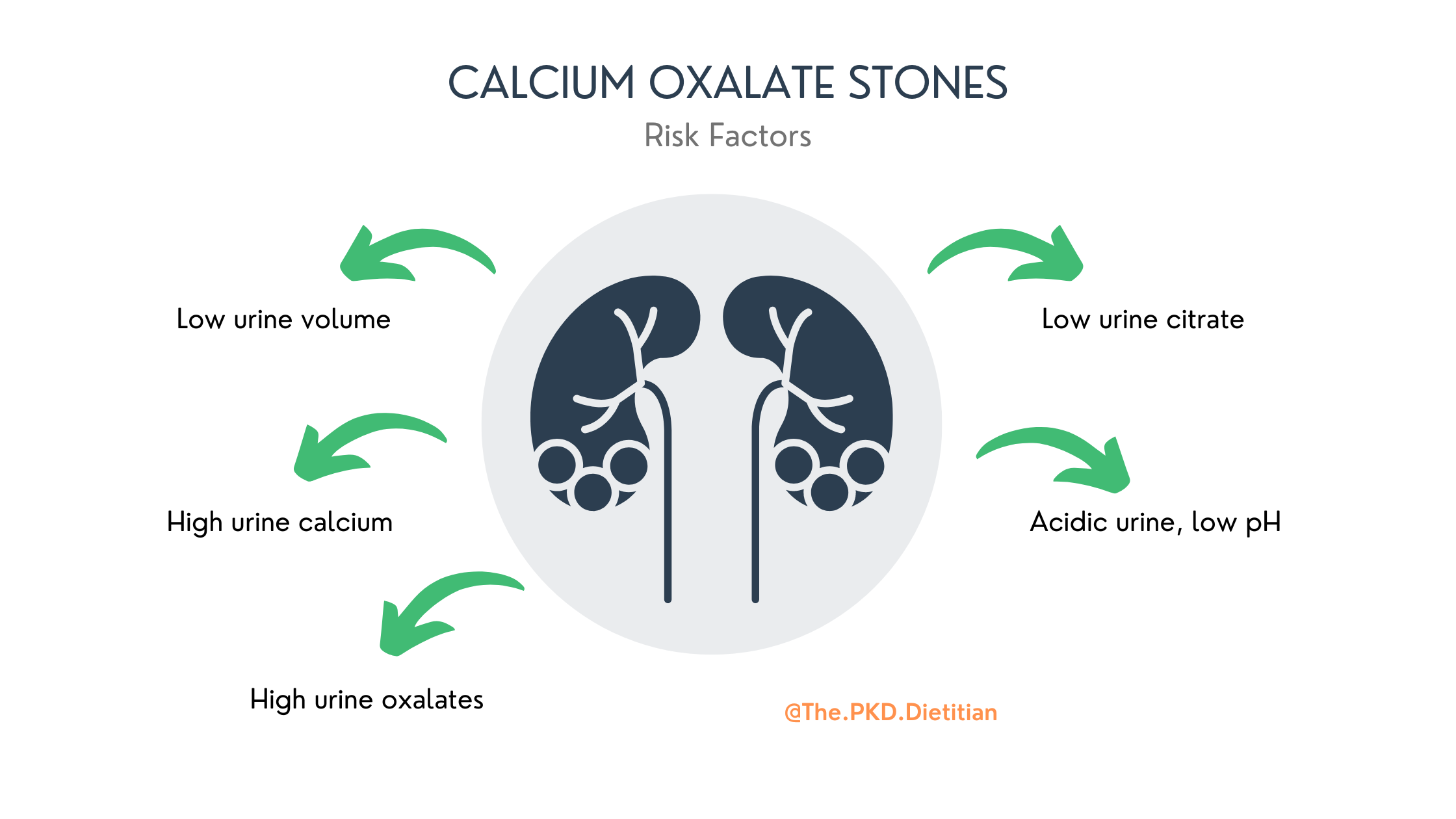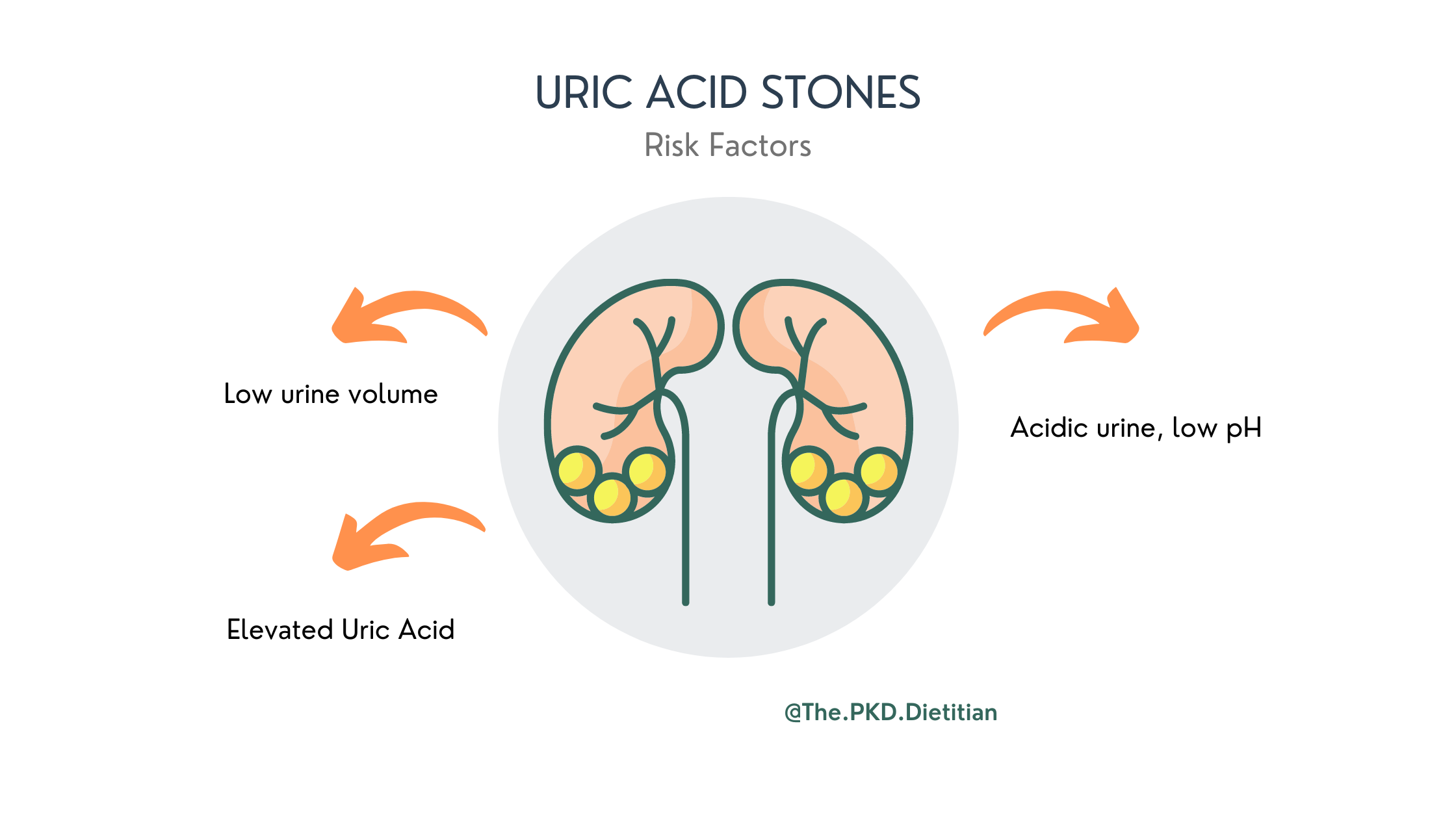
Kidney Stone Risk & Polycystic Kidney Disease, are they connected?
Sep 08, 2022With Polycystic Kidney Disease (PKD) there is a much higher risk of developing a kidney stone. Not only are they painful, but stones can also cause scarring damage to your kidneys. In this blog, we will explore what kidney stones are, why there is a higher risk with PKD, and look at the two most common stones with PKD.
What are kidney stones?
Kidney stones are made up of a mix of minerals that form hard crystal deposits in the urinary tract, most commonly in the kidneys. The technical term for this is Nephrolithiasis. Stones can vary in size, shape, location, and type. The type of stone formed is primarily determined by its composition of minerals.
There are four main types of kidney stones:
- Calcium based stones
- Calcium oxalate, which account for 80% of all stones! (1)
- Calcium phosphate
- Uric Acid stones
- Struvite stones
- Cystine stones
Why do stones form?
Multiple factors influence the formation of kidney stones. Factors include a combination of genetics, environment, and diet. Tiny crystals form when there are electrolyte, mineral, and fluid imbalances in the body and in urine. Those crystals can anchor in the kidneys, or other areas of the urinary tract, and increase in size until they form a stone. When crystals form, they like to stick together. Something you for sure don’t want to happen!
Why are stones more common with PKD?
Kidney stones are significantly more common within PKD than in the general population. An estimated 20-30% of people with PKD have symptomatic kidney stones versus 1% in the general population. (2) There is a greater risk for stone formation with PKD. (3)
Why is this? There are three main reasons and is often a combination of them:
- Kidney cysts, when they multiply and grow, change the structure within the kidneys. Cysts can alter the flow of urine through tubules, slowing it down. (4) When urine moves slowly or sits there is an increased risk of crystal formation.
- Changes within the kidney, because of cyst enlargement and scarring, can also prevent filtration and block the flow of urine through the tubules. Greater total kidney volume (TKV) is an independent risk factor for stone formation. (5)
- Because of the PKD gene, there are altered pathways in the body and metabolic reprogramming that can lead to common urine imbalances. (6) These imbalances include low urine citrate levels, lower urine pH (acidic urine), and higher levels of uric acid in the blood and urine.
The two most common stones formed with PKD are calcium oxalate and uric acid stones. (7) Let’s take a look at factors that contribute to their formation.
Calcium Oxalate Stones
Calcium Oxalate (CaOx) stones are the most common type of kidney stone. They form primarily from a joining of calcium and oxalate in urine. A combination of several factors creates an environment that makes the formation of CaOx stones much more likely. (8)
Urine Risk Factors for Calcium Oxalate Stones:
- Low urine output *< 2.5 liters per day
- Elevated urine calcium levels
- High oxalate urine level
- Low Citrate levels
- Acidic Urine, pH 5-6.0
Uric Acid Stones
Uric Acid stones form when there are high levels of Uric Acid in the urine. The frequency of uric acid stone formation is 40-60% higher with PKD than in the general population. (9) Uric acid is produced in the body primarily from purine-rich animal meat sources. (10)
Urine Risk Factors for Uric Acid Stones:
- Low urine volume *< 2.5 L per day
- Elevated uric acid levels
- Low urine citrate levels
- Acidic urine, pH < 5.5
Signs & Symptoms
Common signs and symptoms of kidney stones include:
- Blood in urine *hematuria
- Abdominal or flank pain
- Back pain
- An urgency to "go" frequently
- Painful urination
- Nausea and vomiting
- Sometimes nothing at all...
- Stones can also be seen on an MRI or CT scan
As you can see, signs and symptoms of Kidney Stones can easily be misdiagnosed as a burst or infected cyst, a UTI, or pain associated with PKD.
What can YOU do to prevent Kidney Stones from forming?
The short answer - A LOT! And not surprisingly nutrition plays a big role.
Check out Part Two for details and actions you can do to reduce your stones risk.
Until then,
Diana, The PKDietitian
Let's get Social!





